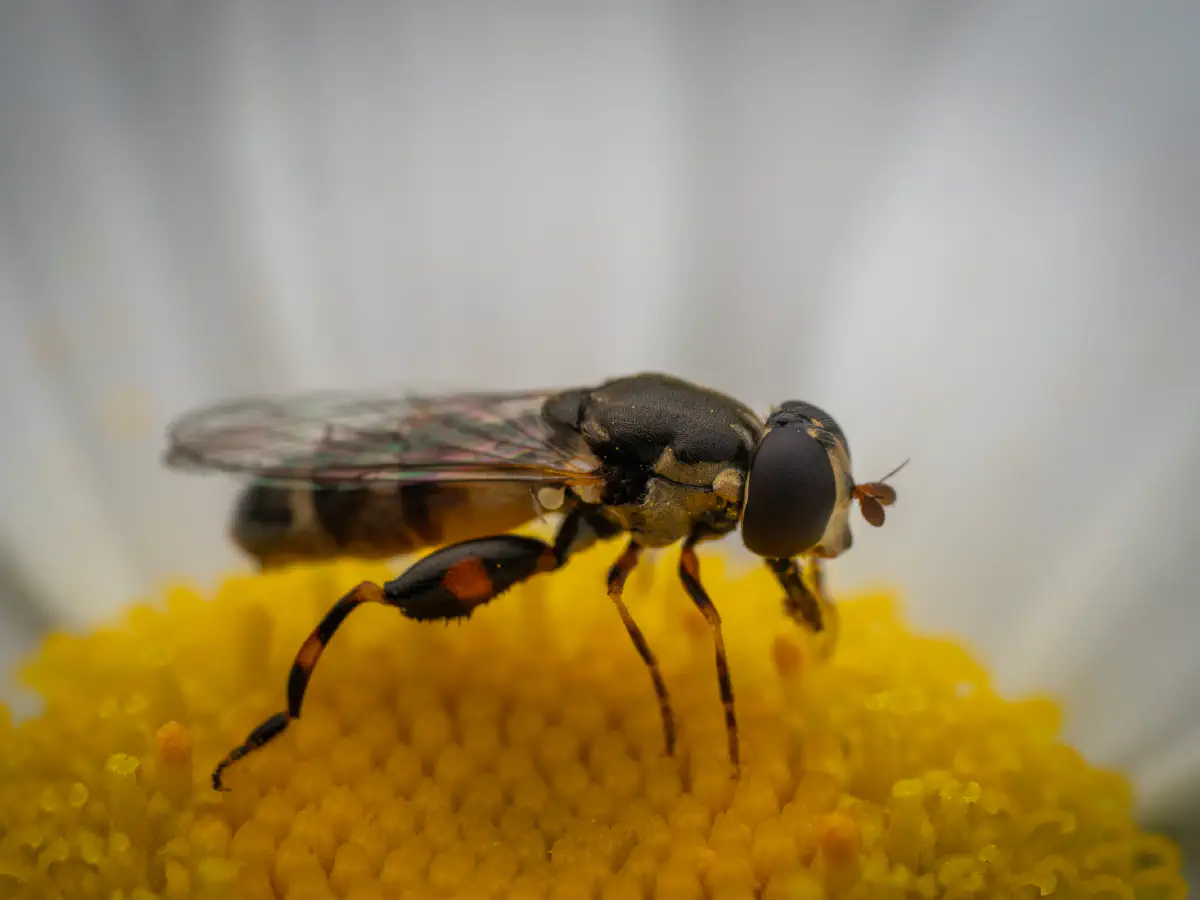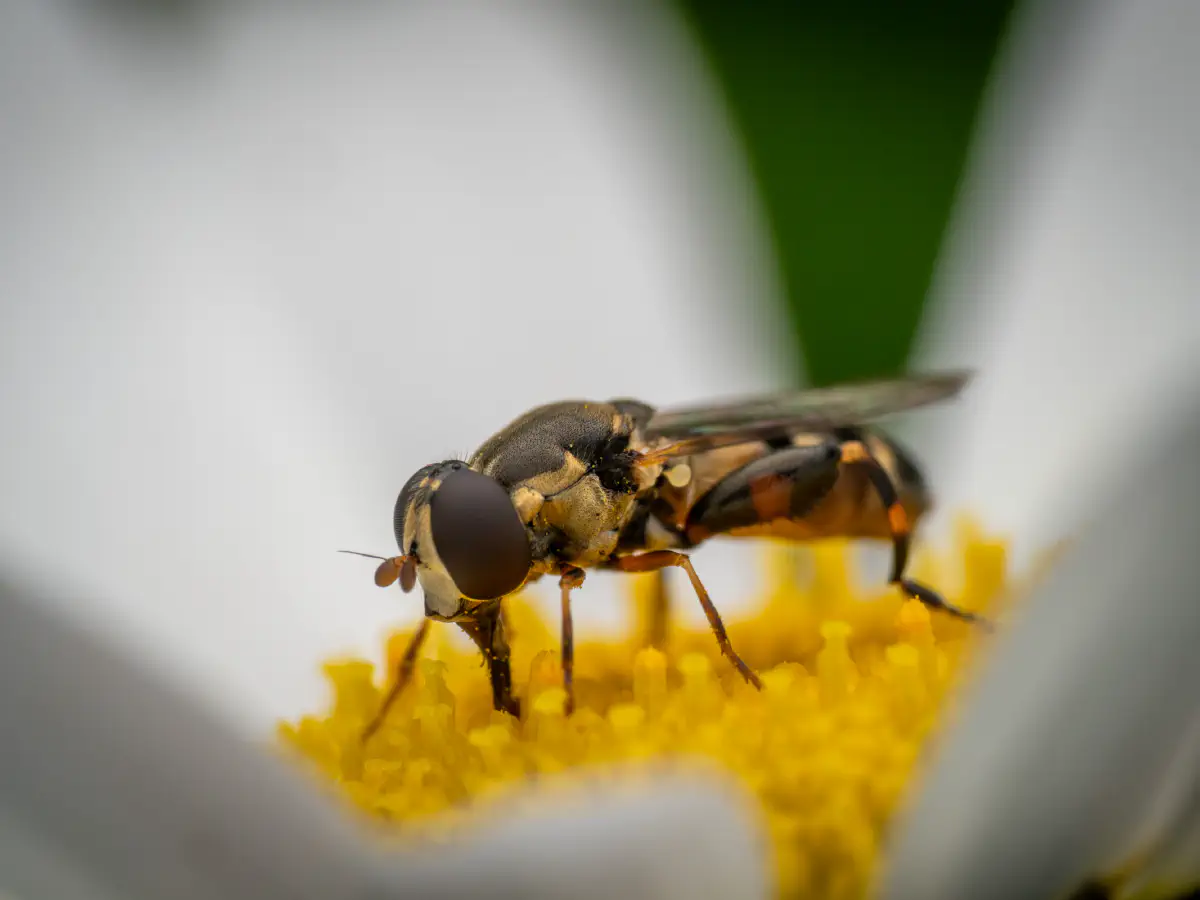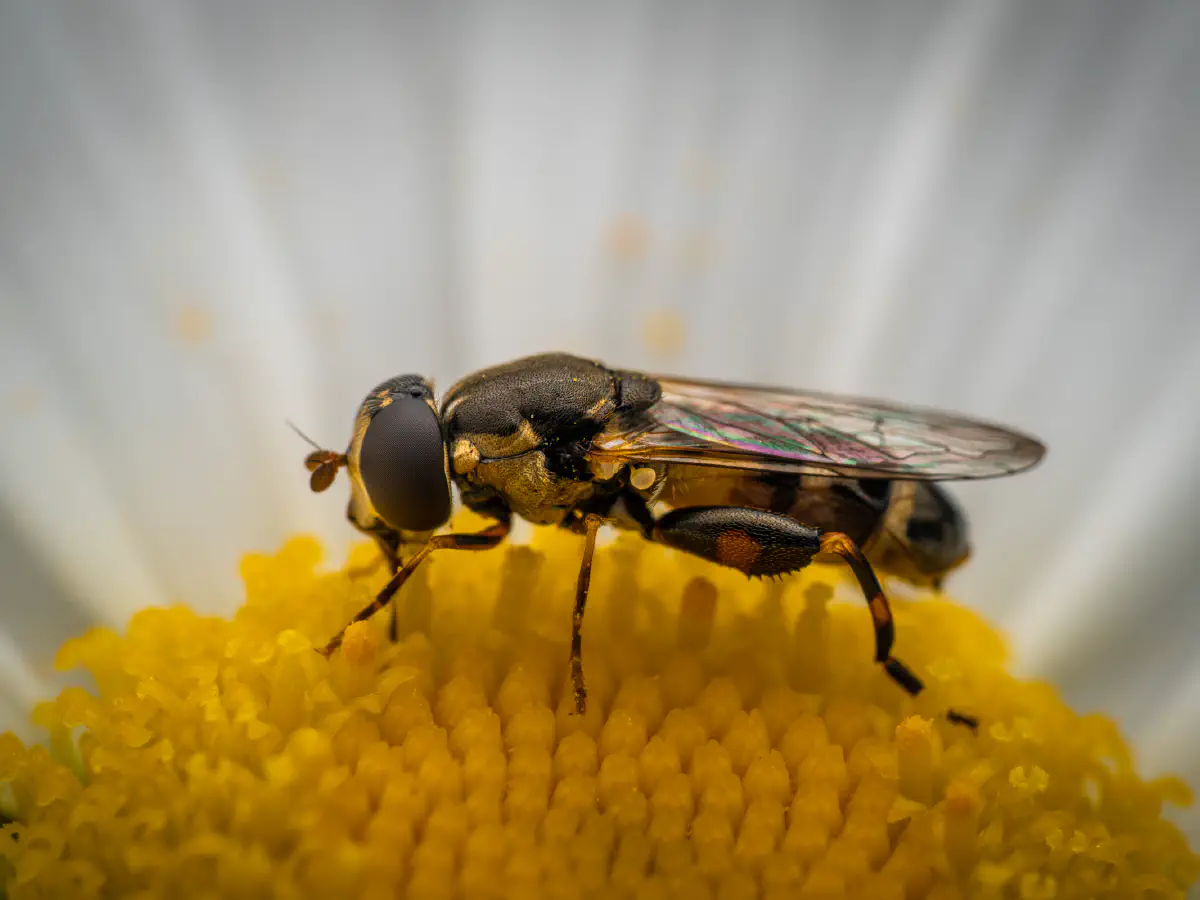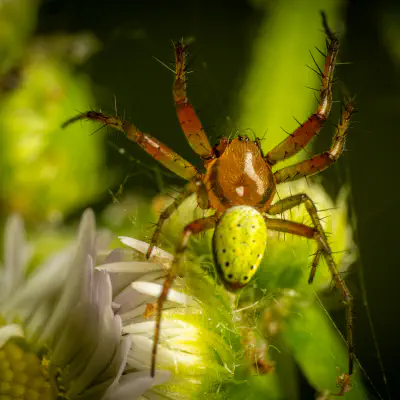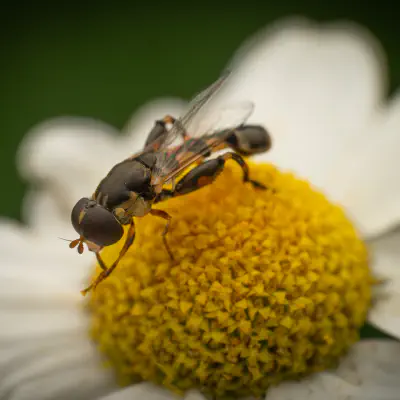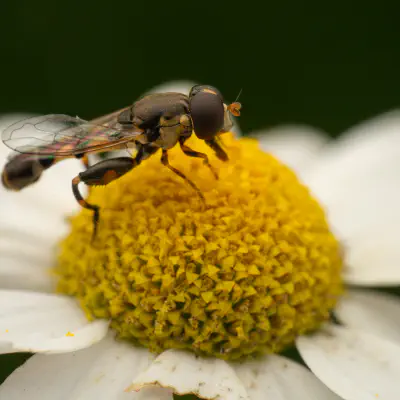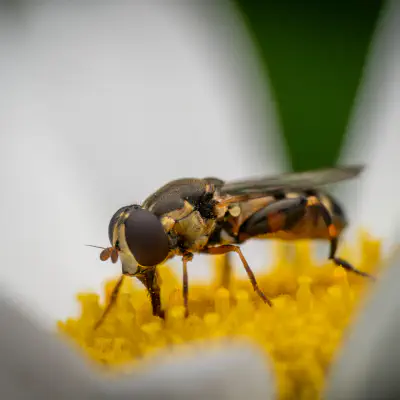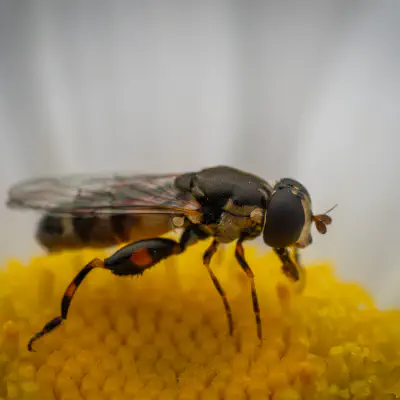The species Syritta pipiens is within the family of Syrphidae, commonly called hover or flower flies. Syrphidae is one of the largest families within the Diptera order and contains about 6,000 known species widely distributed around the world. They are distinctive flies that are often found on flowers, where the adult males primarily feed on nectar and adult females eat protein-rich pollen to produce eggs. The name "thick-legged hoverfly" comes from the fly's distinctively broad femora.
A thick-legged hoverfly has a wing length ranging between 4.25–7 mm (0.167–0.276 in) and a body length between 6.5–9 mm (0.26–0.35 in). Both sexes have apical third of metafemur and a row of spines along the ventral edge. Another distinctive morphological feature is the pair of small white wedge-shaped spots on the fly's thorax directly behind its head. The male femur 3 is strongly thickened. It has no basal protuberance. Tergites 2 and 3 have
small, pale marks. Female tergites have similar markings, with ocellar triangle bluish-black, metallic sheen. Side margins of thorax dorsum are dusted. Side and hind margins of tergite 4 are not dusted. See references for determination. The eyes of Syritta pipiens span over almost the entirety of their heads. Both sexes have similarly sized hemispherical heads, with a diameter of 2 mm. However, the eyes differ among the two sexes in two ways. First, males have
holoptic eyes, meaning that their eyes meet in the front, which is a feature common in male syrphid flies. Second, males have enlarged facets (fovea) between the clypeus and ocellar triangle, which are absent in females.

